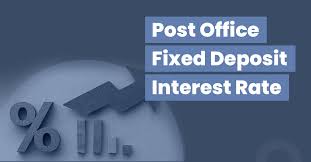When considering where to park your hard-earned money, fixed deposits (FDs) often come up as a reliable option. They offer safety, guaranteed returns, and flexibility in terms of tenure. One of the key aspects to understand about FDs is the relationship between tenure and interest rates. Generally, the unwritten rule is that the shorter the tenure, the lower the interest rate, and the longer the tenure, the higher the interest rate. This article delves into this concept, using the State Bank of India (SBI) as a case study, to help you make informed decisions about your investments.
What Are Fixed Deposits?
Definition and Basics
Fixed deposits, also known as term deposits, are financial instruments provided by banks and other financial institutions. They allow investors to deposit a lump sum of money for a fixed tenure at a predetermined interest rate.
Why Choose Fixed Deposits?
- Safety: FDs are considered one of the safest investment options.
- Guaranteed Returns: The returns on FDs are fixed and not subject to market fluctuations.
- Flexible Tenures: FDs can be chosen for various tenures, from a few days to several years.
The Relationship Between Tenure and Interest Rates
Shorter Tenure, Lower Interest Rate
When you opt for a shorter tenure for your FD, the interest rate offered is typically lower. This is because banks have less time to utilize your money and generate returns.
- Example: A three-month FD in State Bank of India (SBI) offers an interest rate of 5.5 percent.
Longer Tenure, Higher Interest Rate
Conversely, a longer tenure means a higher interest rate. The longer the bank holds your money, the more it can potentially earn from lending or investing those funds, allowing them to offer higher returns to you.
- Example: A one-year FD in SBI offers an interest rate of 6.8 percent.
Factors Influencing FD Interest Rates
Economic Conditions
Interest rates are influenced by the overall economic environment. During periods of economic growth, interest rates might rise, whereas in a recession, rates tend to fall.
Bank Policies
Different banks have varying policies that affect their FD interest rates. These can be influenced by the bank’s need for liquidity, their cost of funds, and competitive pressures.
Reserve Bank of India (RBI) Regulations
The RBI’s monetary policies, such as repo rates, also impact the interest rates on FDs. A change in the repo rate can lead to adjustments in FD rates by banks.
Choosing the Right Tenure for Your FD
Short-Term Goals
If you have short-term financial goals, such as saving for a vacation or a large purchase, a short-term FD might be more appropriate despite the lower interest rate.
Long-Term Goals
For long-term goals like retirement planning or funding your child’s education, a longer tenure FD is beneficial due to the higher interest rates.
Liquidity Needs
Consider your need for liquidity. If you might need to access your funds quickly, a shorter tenure FD would be more suitable. Longer tenures are better for funds that you can afford to lock away for a while.
Benefits of Long-Term FDs
Higher Returns
As previously mentioned, long-term FDs offer higher interest rates, leading to better returns on your investment.
Compounding Interest
Many banks offer the option to compound the interest annually, which can significantly increase the returns over time.
Tax Benefits
Certain long-term FDs come with tax benefits under Section 80C of the Income Tax Act, 1961, up to a limit of Rs. 1.5 lakh per annum.
Risks Associated with Long-Term FDs
Interest Rate Fluctuations
While long-term FDs lock in a higher interest rate, there’s a risk that market rates might rise even higher, and you might miss out on those better rates.
Premature Withdrawal Penalties
If you need to withdraw your money before the maturity date, you might face penalties or reduced interest rates.
State Bank of India (SBI) FD Interest Rates
Current Rates
SBI, one of the largest banks in India, offers a range of FD tenures with varying interest rates. As of the latest data:
- 3-month FD: 5.5%
- 1-year FD: 6.8%
Senior Citizen Benefits
SBI provides higher interest rates for senior citizens, usually 0.50% more than the standard rates.
How to Open an FD in SBI
Online Process
Opening an FD online with SBI is straightforward. You can do it through their net banking portal by selecting the tenure and amount and completing the transaction.
Offline Process
Alternatively, you can visit any SBI branch, fill out the necessary forms, provide the required documents, and deposit the amount to open your FD.
FD Calculator: Planning Your Investment
Using an FD Calculator
An FD calculator helps you estimate the maturity amount of your investment based on the principal, interest rate, and tenure.
- Steps:
- Enter the principal amount.
- Choose the interest rate.
- Select the tenure.
- Calculate the maturity amount.
Tips for Maximizing FD Returns
Laddering Your FDs
FD laddering involves splitting your investment into multiple FDs with different maturities. This strategy provides liquidity and the opportunity to reinvest at higher rates if market conditions improve.
Choosing the Right Bank
Different banks offer different rates. Compare rates from multiple banks before deciding where to invest.
Reinvesting Interest
Opt for cumulative FDs where the interest is compounded and reinvested, leading to higher returns.
Understanding the relationship between FD tenure and interest rates is crucial for making informed investment decisions. While shorter tenures offer liquidity, longer tenures provide higher returns, making them suitable for long-term financial goals. By considering factors like economic conditions, bank policies, and your financial objectives, you can choose the right FD tenure that aligns with your needs.








